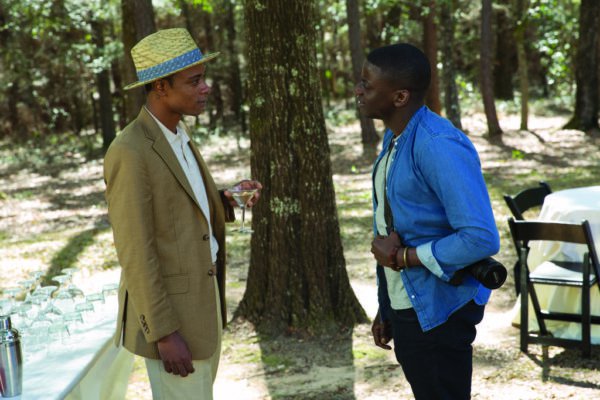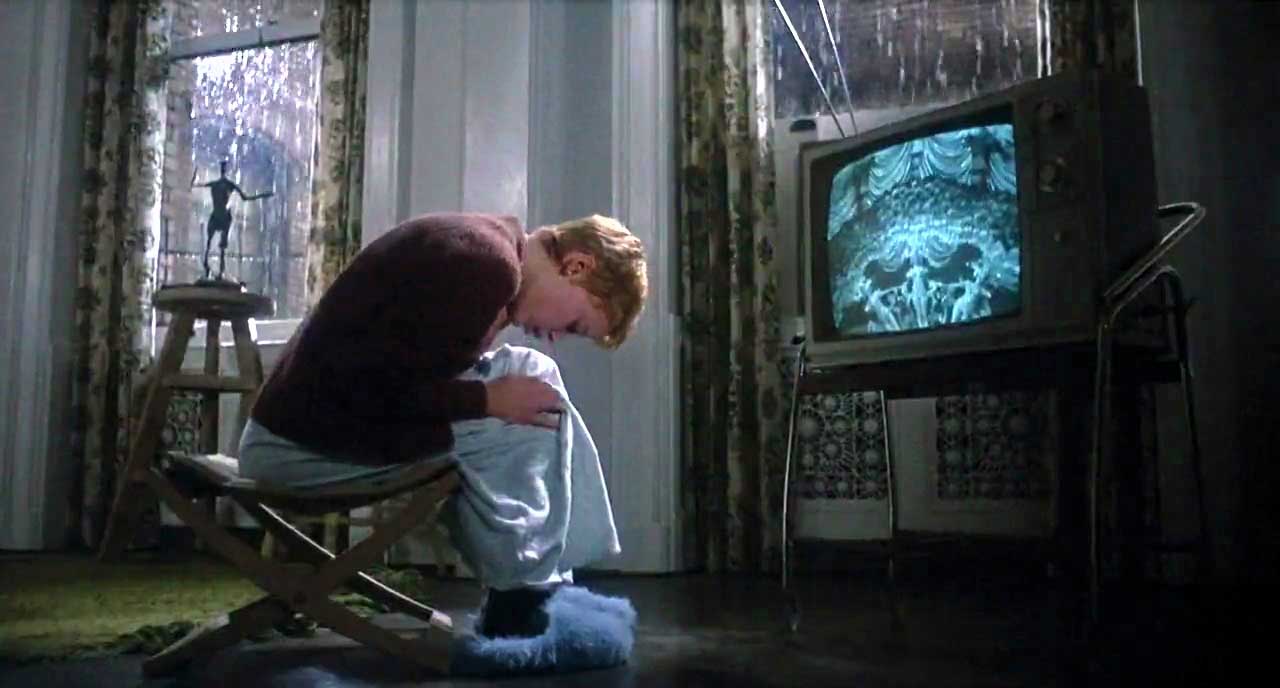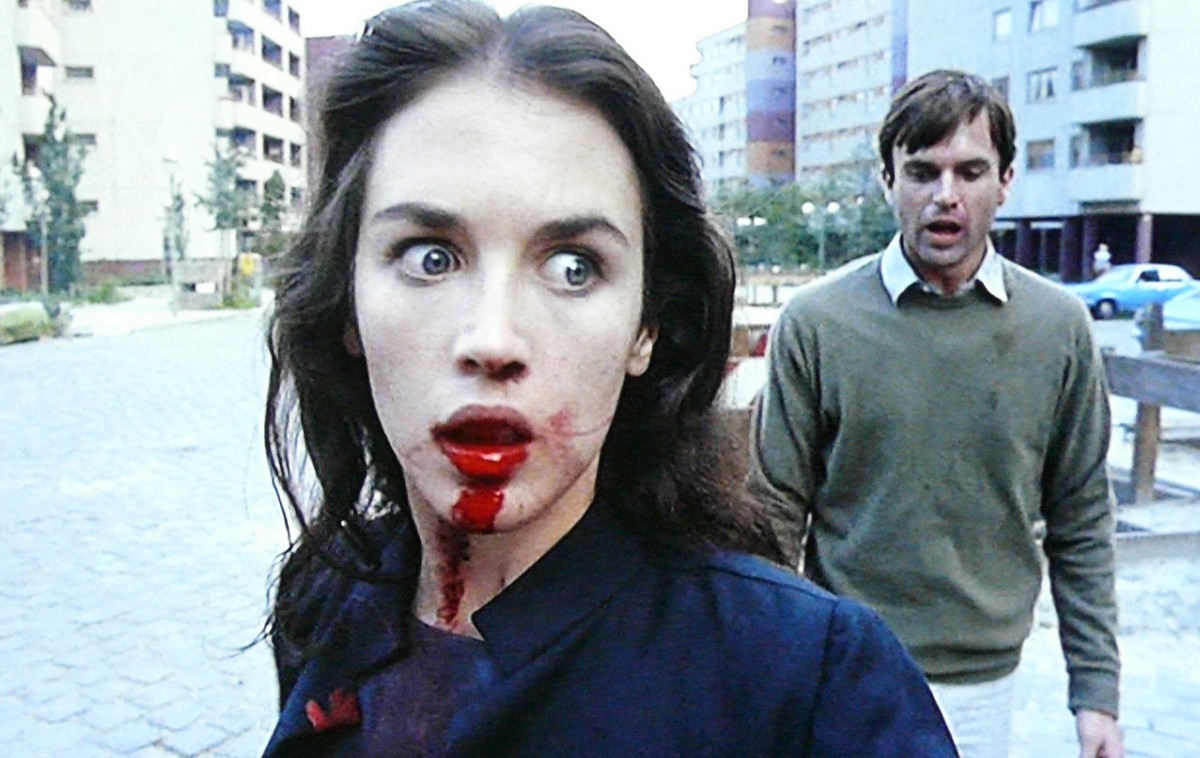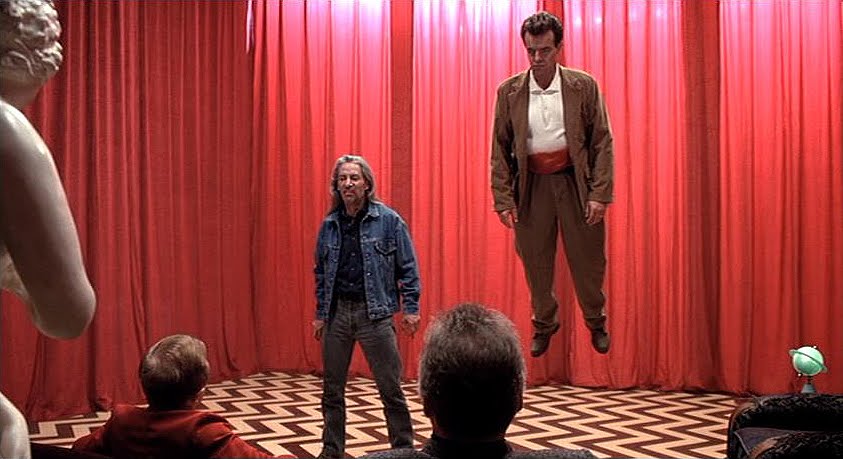5. The Witch

A family of 17th Century puritans get their knickers all in a twist after a force from Hell claws at the delicate fabric of their pious lifestyle. Given the clan’s penchant for fire and brimstone, the film’s dialogue remains not only (deliberately) over the top, but also deliciously Elizabethan. In other words, the language unfolds as if in iambic pentameter, a characteristic that provides an ideal backdrop for some satanic shits and giggles.
Early on, a disrobed Devil worshipper whisks their baby into the dark fortress of the woods, devastating the family. No search happens, as the witch grinds the infant into a paste and rubs it into her wrinkles. Yet, despite the crushing terror of that act, this sacrifice serves as only the first occurrence of the bad luck poised to unfold. When one of their goat’s udders squirts blood and the other one goes bananas under the control of Beelzebub, it becomes clear that demons want to test their faith. Then the real possession fun begins.
Despite all the freakish imagery, the color palate, comparable to a dishwater gray, provides a nice change of pace for a film in this subgenre. Where other movies use neon-green puke to sell their story, The Witch opts for shadow and firelight, offsetting the narrative’s extraness with a quiet ghost story vibe. And in addition to the literal possessions that occur, the film also covers a long list of issues that plague societies and individuals: heretic trials, the pain of puberty, the plight of Native Americans, and religious hysteria. It makes us wonder: who serves as the real possessor, the Devil or us?
4. Get Out

Not all demons crawl from the red-hot bowels of Hell, you know. In fact, most of them hail from white-fenced, whites-only suburbia. This reality, especially pertinent in today’s poisonous climate, provides the narrative backbone for Jordan Peele’s debut feature.
As a picture that blends horror and social satire, Get Out marries three cinematic motivations: humor, fear, and education. At a glance, mixing these temperaments sounds like a volatile cocktail, and in the hands of another storyteller, the combination risks falling to pieces before the second act starts.
Peele makes that tonal hodge-podge mix together in the most flawless way, showing us how marginalized communities might use humor as a salve for the pain of sociopolitical struggles. “This laughter is the laughter of those who consider themselves to be at a safe remove from all the wretched, for whom the pain of living is not real,” James Baldwin once wrote. “This laughter is universal and never can be stilled.”
For the audience, on the other hand, the satirical stuff makes the bitter pill slide down the gullet easier. Sure, using jokes as a deflective measure presents nothing new or innovative, at least not in horror itself. But the angle adds new dimensions to the possession subgenre, which gives most of its focus to demons from Judeo-Christian folklore.
In Get Out, the demons stay down below. Instead the possessors consist of aging rich people who seek out everlasting youth, and to achieve it, they seek out the bodies of those they assume no one will miss. Black people, to be specific. The wealthy elites consider this group not only suitable as a vessel, but also sleek and stylish, as if a new shade of skin equates to a style of a coat.
3. Rosemary’s Baby

Once Roman Polanski released his most iconic work, the character Rosemary Woodhouse became synonymous with warranted paranoia. Everyone in her orbit takes part in the cruelest possible joke, orchestrating a ruse that allows the Devil himself to physically and spiritually penetrate her body and mind. All the while, those she trusts lead her to question the validity of reality, trumped-up gaslighting performed by unmitigated sociopaths.
Rosemary’s Baby provides a prime example of a film that bears heavy sociopolitical weight. In specific terms, religion’s position as an influential power comes into question. With a reverse immaculate conception at play (Lamb of God versus Spawn of Satan), this picture jams every form of controversial lightning rod into the ground.
In fact, to spark an even fiercer debate, abortion rights stand at the forefront of the film’s chief dilemma. After all, Satan rapes and impregnates the main character, and yet the world around her demands that she bring an actual demonseed to term. But of course, going beyond reproductive rights to the broader picture, Rosemary’s Baby shines a spotlight on the loss of control, the signature purpose of possession itself.
Rosemary no longer drives the car, though she feels the inevitable crash set to happen soon.
2. Possession

Possession tiptoes the demarcation line between arthouse and exploitation cinema zones, a graceful tightrope walk that eliminates the siloed nature of such factions. With this framework, Andrzej Zulawski’s masterpiece dives deep into the convoluted circuitry of human psychology, not only for the fictional characters on screen, but also for the real people watching. In this way, the film unearths a truth that titillates while it terrifies.
What does it mean to walk on both sides of the cinematic aisle? Possession’s critical reaction took its status as “arthouse exploitation” to a literal level, as the film received a number of nods at the Cannes Film Festival, while at the same time, got banned in England as a debauched video nasty. But no matter which lens one chooses to view this film, it remains clear that it buoyed the merit of horror in a profound way. Like the Exorcist before it, Possession keeps people talking decades after its run.
The film contains several standout moments, but three scenes in particular show the various levels of possession that take place. As the married couple fight with such venom, as their words find new places to wound, Anna begins to prepare a meal, as if to treat the vicious argument as background noise. She grinds meat, a process which the camera shows from beneath.
From that vantage point, it appears as if the once devoted wife feeds herself into that processor, coming out as a shredded, pulpy mess on the other side. The scene turns a domestic routine into a visual metaphor, making something mundane resonate with its grotesqueness.
The subway scene, arguably the most famous clip, shows the possession reach a fever pitch. The camera, almost with a drunkenly wobbling gait, follows Anna down the grimy, bricked passageway. She succumbs to whatever infiltrated her body and lets out feverish screams, heaving, and manic laughter. She flails about, running against the wet and dirty tiles, slapping her bag against the wall and herself, until she collapses and convulses on the floor. The scene ends when the possession overflows, and a milky goop mixed with blood tumbles from her mouth and ears. A little disgusting, a little beautiful.
Then comes the tentacle sex. Not the animated kind, but a scene committed to celluloid. Anna fornicates with an octopus creature, a spectacle to which her husband Mark bears witness. Those guttural sounds she lets out in this moment of carnival eroticism oscillate between ecstasy and agony, and he finds himself unable to look away. The Freudian implications of this eight-limbed soiree show us the fragility of Mark’s ego, and also the pain inherent with love, but something else lurks in the psychology of it all. It shows how much Mark needs introspection and perspective, how much of this hurt he caused.
The actual possession remains two-fold. In this story, a man aims to own a woman, to control her thoughts and feelings and actions. Thus, her feelings of trappedness take on a physical manifestation.
1. Twin Peaks: Fire Walk with Me

Blue-lipped and wrapped in plastic, Laura Palmer’s body washed up on a gravel bank. Before she became the famous dead girl from Twin Peaks, she balanced a cloak-and-dagger double identity—one part small town sweetheart, one part drug-addled wild child. A Meals on Wheels volunteer decked in plaid skirt and saddle oxfords, that wholesome homecoming queen mirage smokescreened her true life, which amounted to a never-ending saga of abuses.
A nonlinear prequel and sequel to the television show, Twin Peaks: Fire Walk with Me chronicles how Laura lands in such a dismal state. Before we witness her blond locks feather out on the coroner’s table, she experiences a barrage of psychological and physical attacks, all of it lasting years, but none more devastating than the unfathomable crimes her father Leland commits. At least, his body perpetrates these abominations. In fact, a corrupt creature controls his every move. Its name: Killer BOB.
In most possession films, we either catch passing glimpses of the invader, or we never see the presence that takes over at all. But, in the Twin Peaks saga, director David Lynch shows us Killer BOB’s denim jacket, his ash-colored hair, those clunky work boots, the coffee-and-cigarette stains yellowing his teeth. We know BOB all too well. We almost smell his breath that dampens Laura’s neck, and we understand he sits in the pilot’s seat while Leland Palmer serves as the vessel.
Laura, too, becomes possessed, but not from an otherworldly force. The feelings of worthlessness that come packaged with ongoing trauma place a stranglehold on her. The Secret Diary of Laura Palmer, a companion book penned by Jennifer Lynch, details the inner-workings of a mind in such a state. “Accept that you are bad and dirty and cheap and should be thrown to the wolves as scrap meat, and must never bear children, for who knows the faces they would be locked behind from birth until death.”
In this way, Laura’s story functions as a double-possession film, showing us a literal manifestation of evil while meditating on the lingering impact of perverse maltreatment.
Author Bio: John Stanford Owen received his MFA from Southern Illinois University, where he also taught English courses. When not penning reviews and essays on cinema, JSO reads and writes poetry, takes walks with his wife and dog, and dances to Radiohead. Connect with him on Twitter @jstanfordowen.